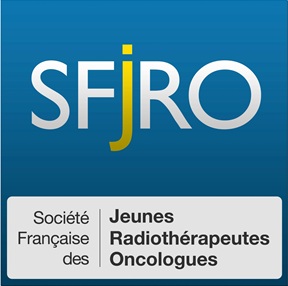Notice
From Computable Numbers to Curing Cancer : Supercomputing and the Frontiers of Human Discovery
- document 1 document 2 document 3
- niveau 1 niveau 2 niveau 3
Descriptif
On the 80th anniversary of the most fundamental technological advancement of humankind, computers are omnipresent in our daily reality. To themajority of people, it might be said that what computers "are" is "indistinguishable from magic" since they do not really know "how" computers work. Infact, Turing showed us that "how" they work is quite simple. What they "do" is indeed nothing short of giving humankind themost powerful "tool" ever for amplifying our (individual and collective) intelligence, creativity, and knowledge. How do we understand and quantify theamazing potential ("power") that computers bring to human discovery ?
Interestingly, both the computational complexity of a problem and the performance of the computer are important in answering the question.High-performance computers (a.k.a. "supercomputers") are the present embodiment of this potential, combining state-of-the-art (parallel) computingtechnology, with the latest approaches to computation-driven and data-driven science and humanities. The Fulbright Distinguished Chair talk willexplore the nature of supercomputing from its fundamental concepts, to the advances it is realizing today, to the opportunities for improving our lives inthe future. The talk will highlight the progress in science and engineering made possible by high-performance computational modeling andsimulation, as well as new opportunities opening up in data science through machine learning and big data. Examples from human brain research andthe ambitious "cancer moonshot" challenge will be highlighted.
Sur le même thème
-
SFjRO - Cancérologie Gynécologique - Tours 2016 : Stratégie de PEC des cancers du col de l’utérus/e…
BARILLOT Isabelle
SFjRO - Cancérologie Gynécologique - Tours 2016 : Stratégie de PEC des cancers du col de l’utérus/endomètre
-
SFjRO - Cancérologie Gynécologique - Tours 2016 : Fertilité et cancers gynécologiques
BENARD Julie
SFjRO - Cancérologie Gynécologique - Tours 2016 : Fertilité et cancers gynécologiques
-
SFjRO - Cancérologie Gynécologique - Tours 2016 : Cancer du col de l’utérus de gros volume supérieu…
CHARGARI Cyrus
SFjRO - Cancérologie Gynécologique - Tours 2016 : Cancer du col de l’utérus de gros volume supérieur à 4cm
-
SFjRO - Cancérologie Gynécologique - Tours 2016 : Techniques innovantes radiologiques dans la prise…
BOURRILLON Camille
SFjRO - Cancérologie Gynécologique - Tours 2016 : Techniques innovantes radiologiques dans la prise en charge des cancers du col et de l’endomètre
-
SFjRO - Cancérologie Gynécologique - Tours 2016 : Radiothérapie adaptative dans la PEC des cancers …
CREVOISIER Renaud de
SFjRO - Cancérologie Gynécologique - Tours 2016 : Radiothérapie adaptative dans la PEC des cancers gynécologiques
-
SFjRO - Cancérologie Gynécologique - Tours 2016 : Actualités en recherche clinique des cancers gyné…
MAZERON Renaud
SFjRO - Cancérologie Gynécologique - Tours 2016 : Actualités en recherche clinique des cancers gynécologiques
-
SFjRO - Cancérologie Gynécologique - Tours 2016 : Cancer du col de l'utérus : peut-on se passer de …
CHARGARI Cyrus
SFjRO - Cancérologie Gynécologique - Tours 2016 : Cancer du col de l'utérus : peut-on se passer de la curiethérapie ?
-
SFjRO - Cancérologie Gynécologique - Tours 2016 : Pathologie cervicale et HPV – prévention, dépista…
BADOUAL Cécile
SFjRO - Cancérologie Gynécologique - Tours 2016 : Pathologiecervicale et HPV – prévention, dépistage, diagnostic et suivi
-
SFjRO - Cancérologie Gynécologique - Tours 2016 : Techniques innovantes de radiothérapie externe da…
BARILLOT Isabelle
SFjRO - Cancérologie Gynécologique - Tours 2016 : Techniques innovantes de radiothérapie externe dans la PEC des cancers du col de l’utérus et de l’endomètre
-
SFjRO - Cancérologie Gynécologique - Tours 2016 : Récidives locales et régionales du cancer du co…
CHARGARI Cyrus
SFjRO - Cancérologie Gynécologique - Tours 2016 : Récidives locales et régionales du cancer du col de l’utérus
-
SFjRO - Cancérologie Gynécologique - Tours 2016 : Place de la radiothérapie dans la PEC des cancers…
BARILLOT Isabelle
SFjRO - Cancérologie Gynécologique - Tours 2016 : Place de la radiothérapie dans la PEC des cancers de l’ovaire
-
SFjRO - Cancérologie Gynécologique - Tours 2016 : Techniques de curiethérapie dans la PEC des cance…
MAZERON Renaud
SFjRO - Cancérologie Gynécologique - Tours 2016 : Techniquesde curiethérapie dans la PEC des cancers du col de l’utérus














